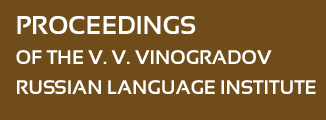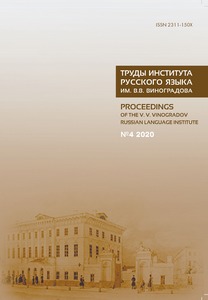ON THE PRONUNCIATION OF ACTORS ON STAGE IN THE FIRST HALF OF THE 20th CENTURY: USUAL AND CODIFIED NORMS (based on the material of the 1944 Vinokur card file and audio recordings of the 1947 MHAT performance “Three Sisters” staged by V. I. Nemirovich-Danchenko)
Abstract:
The issues of orthoepy occupied an important place in the scientific work of the linguists who belonged to Moscow Linguistic School (MLS). They rightly believed that when developing topical issues of orthoepy, it is necessary to take into account the experience of Russian theater, which has always been the keeper and distributor of pronunciation tradition. That is why the representatives of MLS paid special attention to stage pronunciation and spoke of the need to study its current state. One of the first researchers who was interested in it was G. O. Vinokur. In February — March 1944 he attended performances of the Moscow Art Academic Theatre (MXAT), recording and analyzing the actors’ pronunciation. The materials collected by the scientist, organized in the form of card catalogs, are currently stored in the Russian State Archive of Lite rature and Arts. The article considers some orthoepic phenomena presented in the card index, in particular, the old and new variants of the pronunciation of the consonant in the verbal affixes -s’a — -s’: smeyal[sə] — smeyal[s’ə], boyu[s] — boyu[s’]. They allow us to trace the real “life” of the literary norm in the 40s of the XX century, the “struggle” of old and new variants on the stage. The analysis of the card index materials shows that, despite the general adherence of MXAT’s actors to the pronunciation tradition, the speech background of performances in the 1940s. was not homogeneous. Analyzing different phenomena, G. O. Vinokur records a significant number of orthoepic variants even in the pronunciation of the same actor. The materials of Vinokur’s card index are compared with an audio recording of the MXAT’s performance of Three Sisters, made in 1947.


